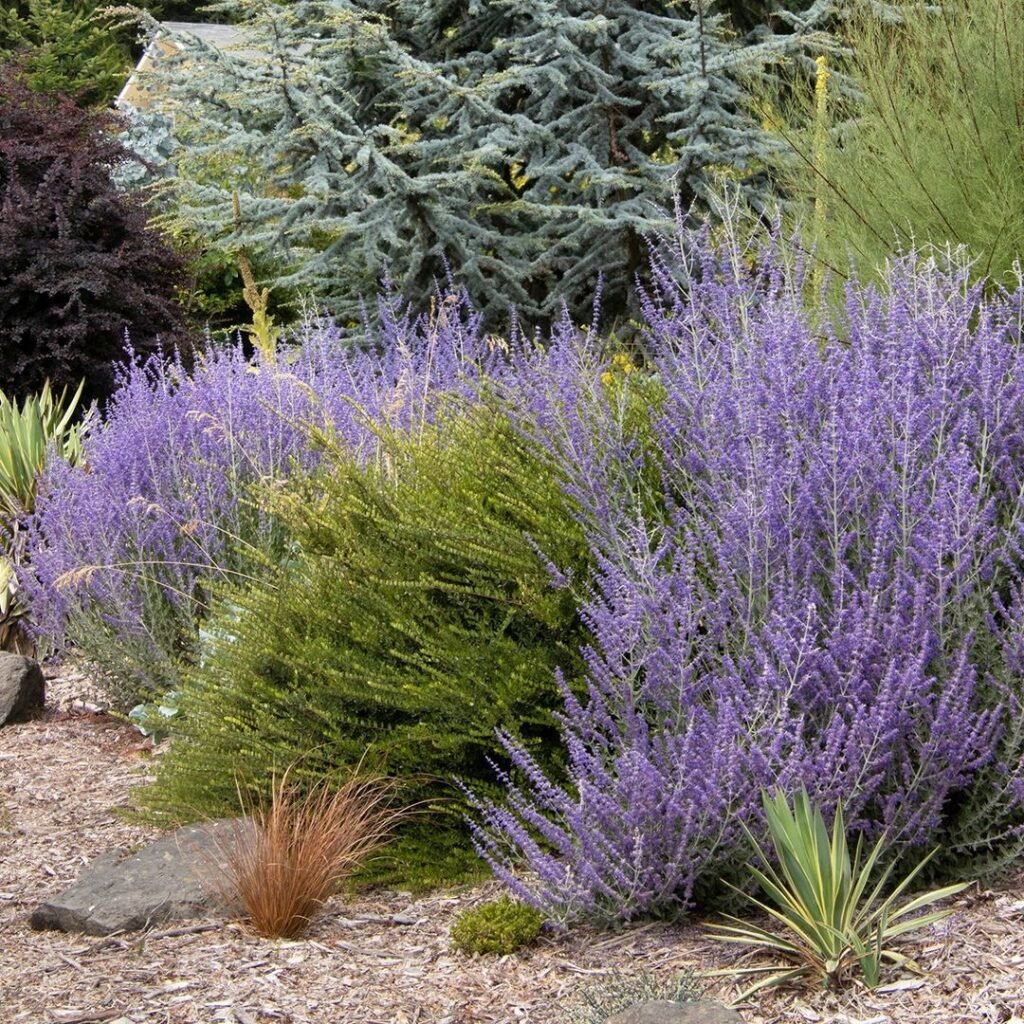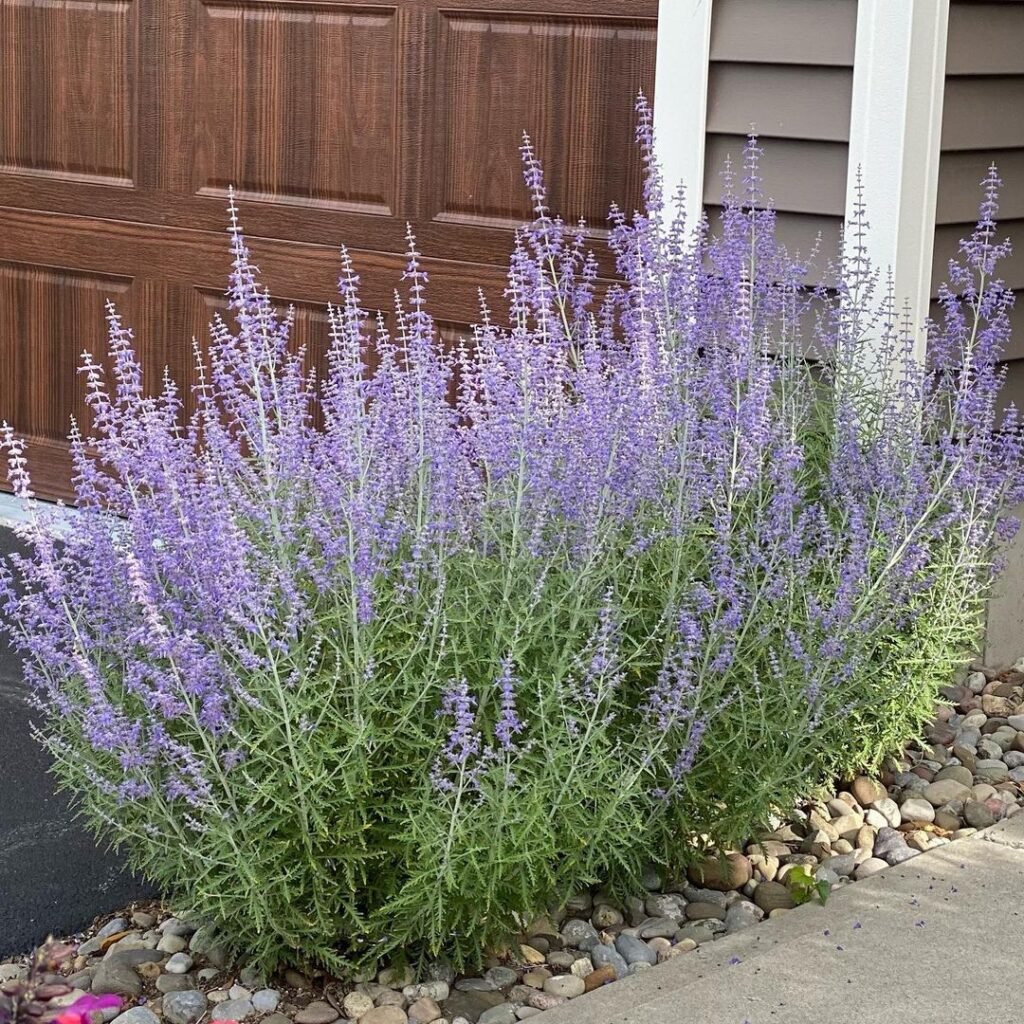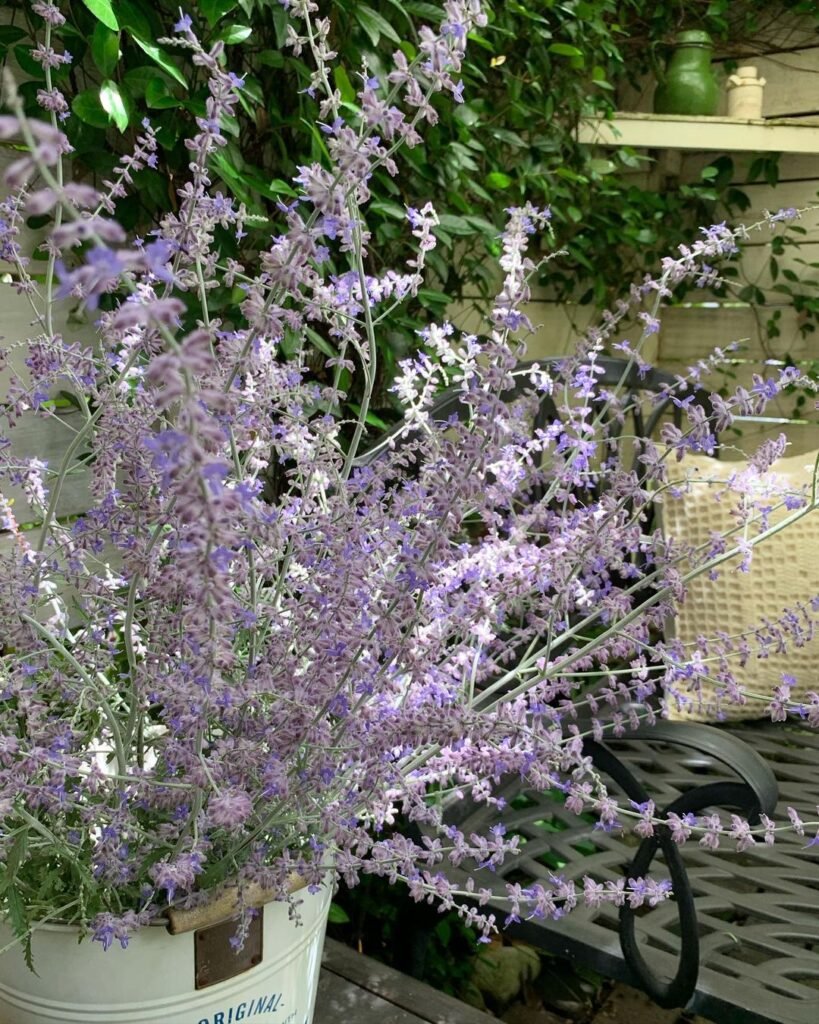Welcome to the captivating world of Russian sage (Salvia yangii), a herbaceous perennial shrub that effortlessly weaves beauty and resilience. Growing successfully in zone 5b, this plant embraces our harsh winters with low-maintenance grace, casting a whimsical charm across your garden. Join us as we delve into the secrets of Russian sage, exploring its origins, characteristics, and the art of nurturing this perennial gem.

Unveiling Russian Sage
Overview
Botanical Marvel:
- Botanical Name: Salvia yangii (Perovskia atriplicifolia)
- Plant Type: Herbaceous perennial shrub
- Family: Labiateae (mint)
- Genus: Salvia subg. Perovskia
- Special Characteristics: Drought and salt-tolerant, a pollinator’s haven
Native Elegance:
- Native Area: Central Asia
- Exposure: Full sun
- Height: 3-5 feet
- Watering Requirements: Low
- Soil Type: Very well-draining, thrives in poor-quality soil
- Pests: No major pests
- Disease: Stem or root rot
- Maintenance: Low
- Hardiness Zones: 4-9
- Bloom Time: June-October

Unraveling History and Aroma
History
Perennial Royalty:
- Recognition: Perennial Plant of the Year (1995)
- Background: Woody base, herbaceous stems
Sage and Salvia
Linguistic Journey:
- Etymology: Latin origin ‘salvere’ meaning to save
- Historical Uses: Medicinal in Roman times
- Modern Uses: Culinary and medicinal applications

Exploring Versatile Uses
Floral Bounty:
- Medicinal Uses: Flowers for essential oils
- Culinary Twist: Flowers and leaves in potpourri, salads, and cocktails
- Health Food Market: Capsules, powders, teas (with caution)
Admiring the Aesthetics
Appearance
Botanical Poetry:
- Foliage: Silvery-green
- Flowers: Bluish-purple, tubular, whorled
- Stems: Sturdy, erect, creating a mound effect
- Floral Guests: Bees, hummingbirds, butterflies
Native Terrain:
- Habitat: Thrives on Central Asian hillsides and grasslands
Which 10 Perennial Flowers Bloom All Summer
Nurturing Russian Sage
How to Grow
Essentials:
- Light: Full sun for optimal growth
- Water: Minimal, avoid overwatering
- Soil: Well-draining, sandy or loamy, pH 5.8-6.5
- Temperature: Hardy in zones 4-9, prefers dry over humid
- Fertilizing: Lightly in spring with fish emulsion or compost
- Pruning: Pinch back for bushier growth, prune annually in spring
- Overwintering: Zone-dependent, cut back accordingly
- Mulching: Consider after winter pruning in northern zones
Propagation
Rooting the Future:
- Growing from Seed: Patience and proper hardening off
- Softwood Cuttings: Peak summer, with root-stimulating hormone
- Hardwood Cuttings: Fall or winter during dormancy
- Division: Not recommended, but possible with tiny shoots
Planting
Transplanting Tales:
- Timing: Spring after frost risk has passed
- Location: Full sun for optimal performance
Gardening Harmony:
- Growth Pattern: Slow spread, easily manageable
- Mature Stage: Most varieties mature after four years
15 Long Blooming Perennials That Flower All Summer Long
Exploring Varieties
Bouquet of Choices:
- Blue Spires: German-origin, dark blue flowers
- Denim n’ Lace: Compact, silver-blue foliage, lavender-blue flowers
- Blue Steel: Simple, oval, deep blue flowers
Tackling Common Problems
Vigilance Pays:
- Pests and Disease: Keep an eye out for potential issues
- Careful Cultivation: Prune, mulch, and fertilize judiciously
Unlock the enchantment of Russian sage in your garden. With its resilience, captivating beauty, and versatile uses, Salvia yangii stands as a perennial testament to nature’s wonders. Happy gardening!
Pingback: Weeping Alaskan Cedar: A Simple Guide to Growing this Beautiful Evergreen Tree -
Pingback: The Shingle Plants: A Beginner’s Guide to Caring for Rhaphidophora Hayi and R. Cryptantha
Pingback: 20 Types of Texas Shrubs – Identification Guide -
Pingback: 10 Gorgeous Pink Flowers to Elevate Your Outdoor Garden
Pingback: Elegant Anemone Flowers: A Comprehensive Care Guide -
Pingback: The 7 Best Companion Plants for Peppers -
Pingback: Front House Russian Sage Landscaping - Back Gardener
Pingback: Sage Plant: The Definitive Guide to Cultivating Salvia officinalis
Pingback: How to Grow and Care for Broom Plants Gardeners Schoo
Pingback: Discover the Majestic White Oak Tree : A Comprehensive Guide - Gardener's School
Pingback: 29 Popular Salvia Plant Varieties Gardeners Schools
Pingback: 18 Ornamental Grass Varieties to Beautify Your Landscape All Year Round